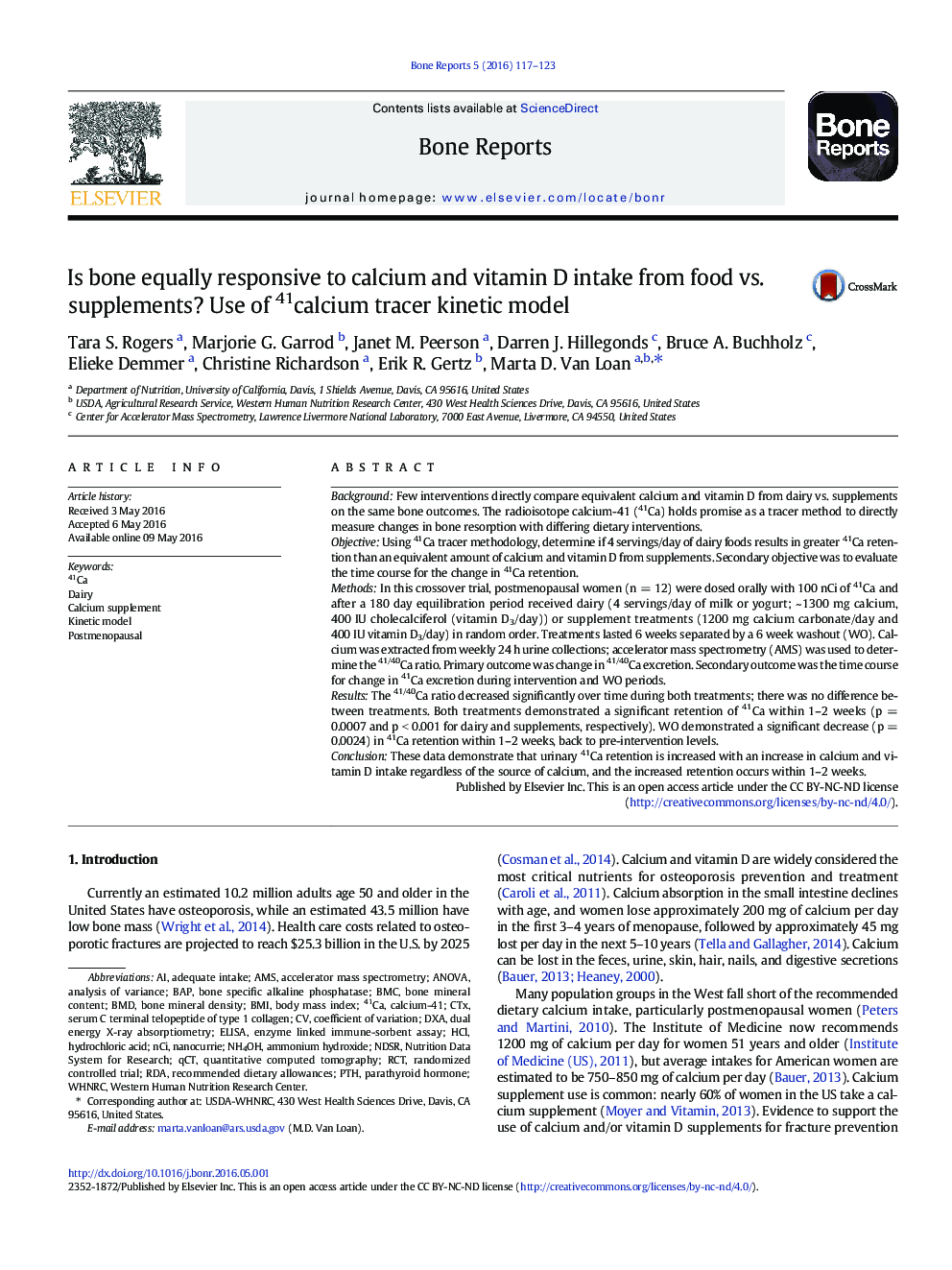| Article ID | Journal | Published Year | Pages | File Type |
|---|---|---|---|---|
| 2792309 | Bone Reports | 2016 | 7 Pages |
•Investigated, using 41Ca tracer, whether bone response to calcium and vitamin D differed based on the source of nutrients, foods vs. supplements.•There was no difference in the bone response by treatment group.•Both dairy foods and supplements resulted in reduce 41Ca excretion in urine.•Reduction in 41Ca excretion occurred with 2 weeks of initiating the interventions.•Removal of interventions resulted in 41Ca excretion returning to pre-intervention levels
BackgroundFew interventions directly compare equivalent calcium and vitamin D from dairy vs. supplements on the same bone outcomes. The radioisotope calcium-41 (41Ca) holds promise as a tracer method to directly measure changes in bone resorption with differing dietary interventions.ObjectiveUsing 41Ca tracer methodology, determine if 4 servings/day of dairy foods results in greater 41Ca retention than an equivalent amount of calcium and vitamin D from supplements. Secondary objective was to evaluate the time course for the change in 41Ca retention.MethodsIn this crossover trial, postmenopausal women (n = 12) were dosed orally with 100 nCi of 41Ca and after a 180 day equilibration period received dairy (4 servings/day of milk or yogurt; ~ 1300 mg calcium, 400 IU cholecalciferol (vitamin D3/day)) or supplement treatments (1200 mg calcium carbonate/day and 400 IU vitamin D3/day) in random order. Treatments lasted 6 weeks separated by a 6 week washout (WO). Calcium was extracted from weekly 24 h urine collections; accelerator mass spectrometry (AMS) was used to determine the 41/40Ca ratio. Primary outcome was change in 41/40Ca excretion. Secondary outcome was the time course for change in 41Ca excretion during intervention and WO periods.ResultsThe 41/40Ca ratio decreased significantly over time during both treatments; there was no difference between treatments. Both treatments demonstrated a significant retention of 41Ca within 1–2 weeks (p = 0.0007 and p < 0.001 for dairy and supplements, respectively). WO demonstrated a significant decrease (p = 0.0024) in 41Ca retention within 1–2 weeks, back to pre-intervention levels.ConclusionThese data demonstrate that urinary 41Ca retention is increased with an increase in calcium and vitamin D intake regardless of the source of calcium, and the increased retention occurs within 1–2 weeks.
